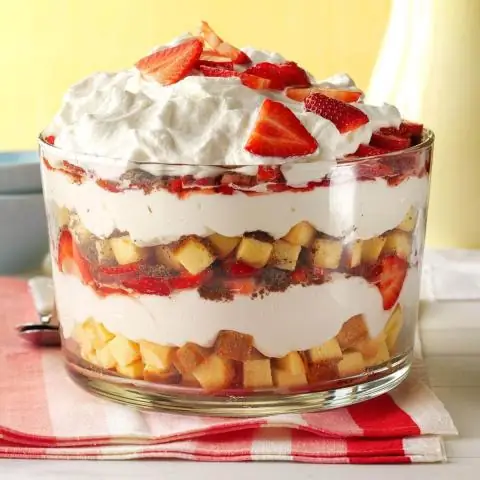
Table of contents:
- Simple cherry jelly recipes for the winter
- What is the difference between jelly and jam and other blanks
- What berries are suitable for jelly
- How to make dessert more flavorful
- The proportions of cherries and sugar for a delicious dessert
- How long is the product prepared for the winter stored
- Pasteurization and sterilization
- What jelly is considered a perishable product and how to store it
- What lids are best for winter blanks
- Cherry Treat Recipes
- Author Bailey Albertson [email protected].
- Public 2023-12-17 12:53.
- Last modified 2025-06-01 07:32.
Simple cherry jelly recipes for the winter

The queen of berries is a very often called cherry. Indeed, we enjoy enjoying it not only fresh, but also in desserts and pastries. And we do not want to put up with the fact that at the end of the season, we will be left without our favorite treat. In addition to its excellent taste, cherries have a rich set of vitamins, which are so lacking in cold weather. Therefore, there are many different recipes for preserving berries. The most common are preserves, marmalades, compotes. But for some reason we forget about another amazingly tasty delicacy that will delight us in winter - cherries canned in jelly.
Content
- 1 What is the difference between jelly and jam and other blanks
- 2 What berries are suitable for jelly
- 3 How to make dessert more flavorful
- 4 Ratios of cherries and sugar for a delicious dessert
- 5 How long is the product prepared for the winter stored?
-
6 Pasteurization and sterilization
-
6.1 Pasteurization
6.1.1 How to pasteurize berry blanks
- 6.2 Sterilization
-
- 7 What jelly is considered a perishable product and how to store it
- 8 Which lids are best used for blanks for the winter
-
9 Cherry Treat Recipes
- 9.1 Pitted Cherry Jelly
-
9.2 Jelly with "Zhelix" from pureed cherries
9.2.1 Video: jelly with "Zhelfix"
- 9.3 Cherry dessert with gelatin
-
9.4 Cherry Juice Jelly
9.4.1 Video: cherry jelly for the winter without gelatin
- 9.5 The unique taste of felt cherry
- 9.6 Jelly with bones in a slow cooker
- 9.7 Is it possible not to cook berry jelly
-
9.8 Video: winter cherry jelly with gelatin
9.8.1 Reviews of housewives about cherry jelly
What is the difference between jelly and jam and other blanks
Often, jelly from berries in conversation is replaced with jam or confiture. But any culinary expert will immediately say that this is wrong. What is the difference between jelly and their counterparts in blanks?
It is customary to call jam a sugar-berry or fruit mass, during the preparation of which the berries are boiled. In jam, on the contrary, the main task of the chef is to keep the berries safe and sound. To do this, the jam is boiled for a short time, several times, so that it has time to cool down during the break between cooking.
Jam is a jelly-like berry mass, which is a type of jam. In the finished form, the presence of whole fruits or pieces in the jam is permissible.
But jelly individually. This is not a kind of jam or jam. It is prepared with the addition of gelling agents: gelatin or agar-agar. And the appearance of jelly is similar to jelly, and not liquid jam.
So, we have decided on the differences, we can proceed to the selection of cherries for the blanks.

You can make delicious and aromatic jelly from cherries
What berries are suitable for jelly
Any variety is suitable for this kind of blanks. You can take both sour and sweet berries. Even mixing varieties when preparing a treat gives a surprisingly delicate and refined taste. The main thing is that the berry is fresh and ripe, but not overripe. Do not use frozen cherries. It is perfect for compotes, but freezing will negatively affect the consistency and taste of the jelly.
- We take fresh cherries, only harvested. After all, this berry has a very thin and delicate skin. And cherries can easily go bad, even with light damage.
- The jelly berries must be whole, without cracks. We remove the rotten and burst ones when sampling from the total mass.
- If we are planning long-term storage throughout the winter, then we remove the seeds.
- When the jelly is being prepared for quick use, the bones do not need to be removed. They give a light almond flavor to the product.
- The stalks must be removed.

Cherries for jelly are selected ripe and without flaws
How to make dessert more flavorful
The French add tartaric acid to the jelly, 1 tsp. for 1 kg of berries. It is poured into a treat immediately after cooking. The acid is not only a good preservative, but also enhances the alluring aroma of the cherry. This ingredient can be found in the spice section of supermarkets. If it was not possible to find a solution, it can be replaced with dry red wine at the rate of 0.5 tbsp. for 1 kg of cherries.
To make the jelly more fragrant, after cooking, put vanillin in it (on the tip of a knife). Mix gently to keep the berries intact.
Cinnamon (on the tip of a knife) and sweet peas (2-3 grains) add a touch of mystery to this delicacy. They set off the taste of cherries, making the aroma more subtle and refined.
If you want to add some daring touches to the smell and taste of the jelly, you can put a few cloves 5 minutes before the end of cooking. It is important not to overdo it here, it is better to stay at 2-3. More can make the aroma too harsh.

Cinnamon will add a touch of mystery
To make the delicacy more aromatic, it is added when cooking lemon or orange peel. It is very important, when cutting off the zest from the fruit, not to grab the white edge, otherwise the jelly will taste bitter. The zest is cut in a spiral. When cooking, it is placed in a cherry mixture, and then removed with a slotted spoon or spoon.
Speaking of mint as an enhancer of taste and smell, it should be emphasized that there are a lot of varieties of this plant. These are curly mint, peppermint, long-leaved, tarragon, field and apple. Not every one is useful for jam, stewed fruit or jelly. We can only use 3 of these varieties for cooking:
- Curly mint. It does not have a sharp cooling aftertaste, but at the same time mint gives a wonderful refreshing effect. It is used in cooking and homemade products, fresh and dried.
- Many nationalities actively use long-leaved mint just to add aroma to drinks, desserts and preparations. It is also used to reveal the more delicate taste of marinades, fermented foods, marmalades and preserves.
- Peppermint, added fresh or dried. But, as a rule, it is not combined with spices. Peppermint is self-sufficient. As with spices, its dosage is minimal. Fresh mint is put from 1 to 5 g, dried 0.2 - 0.5 g per serving. Add the spice 5 - 10 minutes until tender.

Peppermint is added shortly before the jelly is done
The proportions of cherries and sugar for a delicious dessert
Cherry Jelly is not only a set of vitamins for the winter. It can become a full-fledged dessert or complement cakes and pastries. Among the housewives there is a conviction that sugar cannot be spoiled. After all, if you do not report granulated sugar, then the product may ferment or become moldy. But what if the family loves moderately sweet goodies? You can reduce the amount of sugar. The maximum amount of granulated sugar per 1 kg of cherries for jelly is 2 kg, the minimum is 350 g.
How long is the product prepared for the winter stored
You need to store jars of jelly in cool and dry rooms. It is important that ventilation works well in the cellar or basement, preventing the air from stagnating. The temperature for an unpasteurized product ranges from 0 to +10 o C. Such jelly, according to experts, can be stored for no more than 6 months.
Berry delicacies that have undergone pasteurization and sterilization procedures can also be stored at +20 o C. But this is the maximum temperature for fruit preparations. If the room is warmer, then there is a high probability that the workpiece will be sugared or cloudy. When kept under appropriate conditions, pasteurized jelly lasts about 12 months from the date of manufacture.
Pasteurization and sterilization
Berry blanks, as a rule, are heat treated.
Pasteurization
Pasteurization is a method of heat treatment of food products with the need for their disinfection and longer storage. This effect is achieved by killing bacteria and microorganisms. The method was proposed by the French scientist Louis Pasteur in the middle of the 19th century. The method consists in a one-time heating of the liquid to a temperature of 60-90 degrees. The countdown starts from the moment the set water temperature is reached. The duration of the process depends on the type of workpiece. Berry jelly usually pasteurized for a quarter of an hour (0.5 liter jars) at 85 for S.

Pasteurization is used for fruits, berries and vegetables whose cell sap has an acidic reaction
How to pasteurize berry blanks
- Put a clean rag or wooden grate on the bottom of the bucket or pot.
- Gently pour water into the pot. Its quantity is easy to determine - the liquid level should reach the shoulders of the can.
- We put the jars filled with jam and cover them with lids. So that the covers do not accidentally rise and water does not get into the workpiece, a load is placed on top. For this purpose, you can take any large flat plate.
- Turn on the fire and bring the water to the required temperature.
- Pasteurize the dessert for the period specified in the recipe.
- After the product has warmed up, the load is removed, and the jar, without lifting the lid, is taken out of the water using special tongs and placed on a table with a soft bedding (towel or clean rag).
- The cans are hermetically sealed using a special sealing key.

You can easily pull the jar out of hot water with tongs
Sterilization
Sterilization is the basis for a long and successful storage of workpieces. This process is a heat treatment of the product at a temperature of 115-120 degrees for 15-30 minutes. In addition, the steam sterilization method is popular - processing for 20 minutes with steam under pressure at a temperature of over 130 degrees.
What jelly is considered a perishable product and how to store it
Jelly with a low sugar content should be refrigerated, but even this way it is not recommended to store it longer than 90 days. This is explained by the fact that sugar, in combination with the natural pectin contained in the berry, forms a gelling mass. The amount of sugar in the jelly depends on its gelatinousness, transparency - the main factors in determining the quality of the dessert. Sugar in a ratio of less than 1: 2 makes the delicacy more liquid, prone to fermentation and mold, which lowers the quality of the workpiece. Thus, the product goes into the perishable category, and it is better to store jelly with a sugar content of 350 to 500 g per 1 kg of cherries in the refrigerator.
What lids are best for winter blanks

A seaming key is used to seal a metal cover without a thread
Jelly can be rolled up with a special wrench (for this, metal caps without threads are taken), for cans with screw threads, metal screw caps are used. But to facilitate the process of closing blanks for the winter, you can use plastic ones. It is enough to dip them into hot water for half a minute and close the jars tightly. This will require a minimum of effort and will not compromise the quality of the seal and shelf life.

The cellar or basement where the jelly will be stored must be dry and ventilated
Cherry Treat Recipes
Consider a variety of jelly recipes.
Pitted cherry jelly
We need:
- Cherries - 1 kg;
- apple juice - 1 tbsp.;
- sugar - 500 g
Preparation:
- Remove the seeds from the washed cherries. This can be done with a special typewriter or a pin.
- Steam in a saucepan in a little water. The pot should be covered with a lid.
- After 3-5 minutes, remove the mass from the heat.
- Wipe through a sieve or colander.
- Gradually stir in the apple juice and sugar into the resulting cherry puree.
- We put on a small fire and cook until thickened.
- Pour hot jelly into sterile jars.
- We tighten the metal covers tightly with a special key.

To prepare a delicious cherry treat, first remove the seeds
Jelly with "Zhelfix" from pureed cherries
Many housewives have a pertinent question: "Zhelfix" - what is it? Just a gelling additive. In large quantities, among other components, it contains natural pectin, which is obtained from apples and citrus fruits. Let us remind you that gelatin is of animal origin, and "Zhelfix" consists only of vegetable substances, in addition, it completely retains the color, taste and vitamins of berries. If desired, "Zhelfix" can be replaced with pectin. The difference will not be noticeable.
- Cherries - 1 kg;
- sugar - 500g;
- "Zhelfix" - 1 pack.
Preparation:
- To quickly remove seeds from berries, simmer the cherries covered over low heat for 3 minutes.
- Pour the juice that has formed as a result of cooking into a separate bowl.
- Using a mixer or blender, beat the cherries in a saucepan until puree.
- We rub the mass through a sieve into the juice. Through small cells, the pulp easily penetrates into the future jelly, and the bones remain in the strainer.
- Mix "Zhelfix" with 2 tablespoons of sugar.
- While stirring, add the mixture of "Zhelfix" into a slightly warm cherry mass.
- Bring to a boil.
- Stir the mixture with a wooden spoon and add the remaining sugar. After which the cherry should boil again.
- After boiling, cook for 3 minutes.
- We pour into dry sterilized jars.
- Close it tightly with lids and remove it before winter.
Video: jelly with "Zhelfix"
Cherry dessert with gelatin
This is one of the varieties of jelly, but using gelatin. The brewing process itself takes a little time and, despite the long settling of the juice overnight, it is considered a convenient and fast way.
- Cherries - 1 kg;
- sugar - 700 g;
- instant gelatin - 2 tbsp. l.
Preparation:
- We wash the cherries well, remove the seeds.
- Add sugar.
- Mix gently.
- We remove the cherries in a cool place overnight. After this time, the berries will juice up.
- Now we put the saucepan with cherries on low heat.
- While stirring, bring to a boil and cook for 3-4 minutes.
- Dilute gelatin with cold boiled water, then heat until dissolved (do not boil!).
- After the cherry has boiled for the allotted time, add the gelatin, stir and turn off the heat, remove the foam.
- We immediately lay out the hot jelly in dry and sterile jars.
- Close tightly with plastic lids.
- Then we turn the container upside down and wrap it in a towel for 10-12 hours.
- The jelly is ready and can be removed to the cellar.

Instant gelatin is convenient because it does not need to be soaked and waiting for the granules to swell
Cherry Juice Jelly
We need:
- cherry natural juice - 1 l;
- sugar - 1.5 kg.
Preparation:
- Pour the juice into a saucepan.
- Pour granulated sugar there, mix.
- We place the dishes with juice on the stove.
- While stirring, bring to a boil.
- Boil over low heat until foam appears.
- When foam appears, remove it from the surface with a spoon.
- Cook the juice with sugar until the mixture thickens.
- Do not forget to stir all the time so that the delicacy does not burn.
- We lay out in sterilized jars.
- We roll up the banks.
- We send the received canned food for storage in the basement or cellar.
Video: cherry jelly for the winter without gelatin
The unique taste of felt cherry
Ingredients:
- Felt cherry - 1 kg;
- sugar - 1 kg.
Preparation:
- Rinse the berries thoroughly and peel them of the stalks.
- We rub the cherries through a sieve - you should get a puree.
- Pour in sugar.
- We mix.
- Cook until thick.
- We distribute the finished delicacy in sterile jars.
- We close with twisting metal lids.
- We put it in the cellar or closet.

Felt cherry has a velvety flavor and is excellent for jellies
Jelly with seeds in a slow cooker
Required products:
- Cherries - 500 g;
- sugar - 2 cups;
- granulated gelatin - 2 tbsp. l.
Preparation:
- Sprinkle the berries with sugar.
- Leave for 2 hours until the juice is released.
- We mix.
- On the multicooker we set "Quenching" and set the time: 1 hour.
- In a separate bowl, dissolve gelatin in the required amount of water.
- We put the sweet berry mass to cook.
- Pour gelatin with water. Heat the swollen gelatin before adding it to the jelly.
- As soon as the multicooker gave a signal to stop cooking, add gelatin, mix and distribute the dessert into sterile jars.
- We roll up the covers with a special key, turn them over.
- We are waiting for the blank to cool down and put the jars into the pantry or cellar.

We cook jelly in a slow cooker on the "Stew" mode
Is it possible not to cook berry jelly
As it turned out, you can. Fruit juice is gelled with a pectin content of 1% per 100 g of berry mass.
Cherries themselves are rich in pectin and contain from 6 to 11.4% of this substance per 100 g. Depending on the ripeness of the berries. The more ripe the cherry, the more pectin it contains. But even unripe berries can be used for jelly. The hardness of cherries and other berries and fruits is due to the fact that they contain protopectin. When the berries ripen or are exposed to temperature, protopectin breaks down, releasing the contained pectin. That is why hot water is indicated in the recipe. Of course, jelly will not be quite similar to the store. But sugar, in combination with mashed berries, really gelates, as it is a thickener. You cannot make a sweet liquid syrup when cooking.
- Sugar 400 g;
- cherry - 400 g;
- hot water - 50 ml.
Preparation:
- Remove the seeds from the washed cherries.
- We pour out the released juice into a separate bowl - we don't need it anymore. You can give it to children to feast on.
- Scroll the cherries through a meat grinder.
- Add sugar and mix well until dissolved.
- Add hot water and stir again.
- We roll it into jars, after placing the parchment under the lids. The properties of parchment help prevent mold on jelly and other workpieces. It serves as a kind of barrier between the dessert and the fungus environment.
Video: cherry jelly for the winter with gelatin
Reviews of housewives about cherry jelly
A delicate delicacy that melts in your mouth, with an amazing aftertaste. It can be used as a cake decoration. Or enjoy jelly as a dessert. In any case, it brings warm memories of summer and sun. For the sake of these light feelings, you can experiment in the kitchen. Whichever recipe you choose, let its result please you and your family on winter evenings.
Recommended:
Step-by-step Recipes For Red Currant Jelly For The Winter, Without Cooking, With Sugar + Video

Methods for preparing delicious red currant jelly for the winter. Recipes and storage under various conditions
How To Make Yogurt At Home - Recipes For Making Drinking, Greek And Other Options From Milk (including Goat Milk), In And Without A Yogurt Maker, Video And Reviews
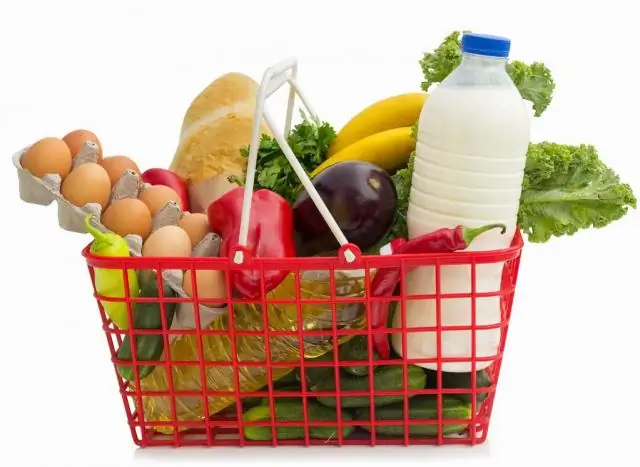
Properties and types of yoghurts. How to choose products. Homemade recipes in a yogurt maker and without
How To Make Mayonnaise At Home: Recipes With Eggs, Milk And Without, In 5 Minutes And Others, Video
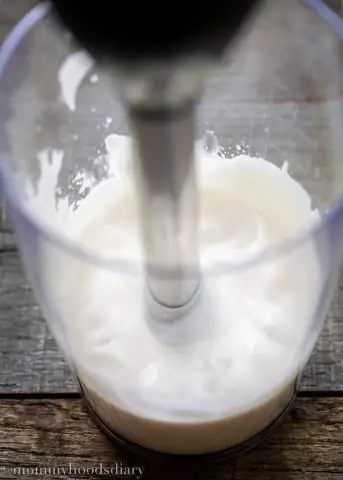
Homemade mayonnaise recipes. Classic mayonnaise, no eggs, milk-based, lean and vegetarian. Ingredients, cooking secrets
Nutella At Home: Step-by-step Recipes For Chocolate Spread With And Without Nuts, Photo And Video
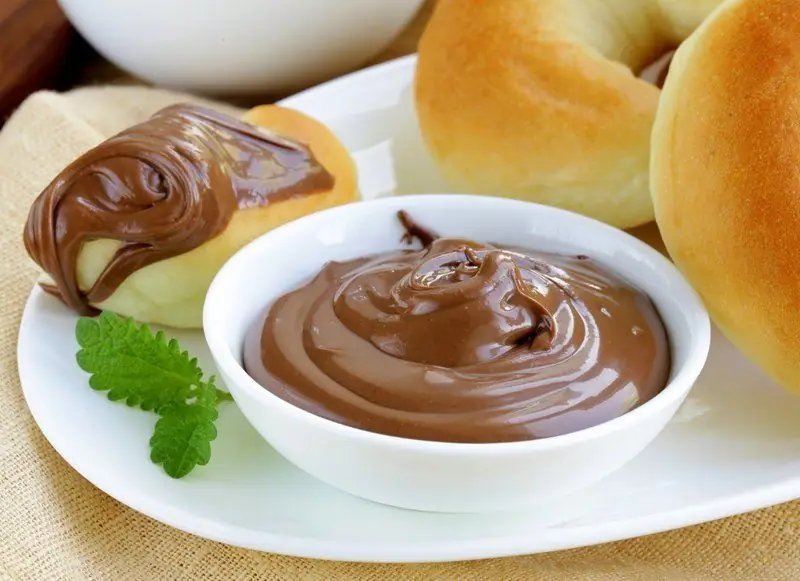
How to make Nutella pasta at home. Step by step recipes
Cottage Cheese Cake For Easter: Step-by-step Recipes For Delicious Pastries With And Without Yeast, Photo And Video
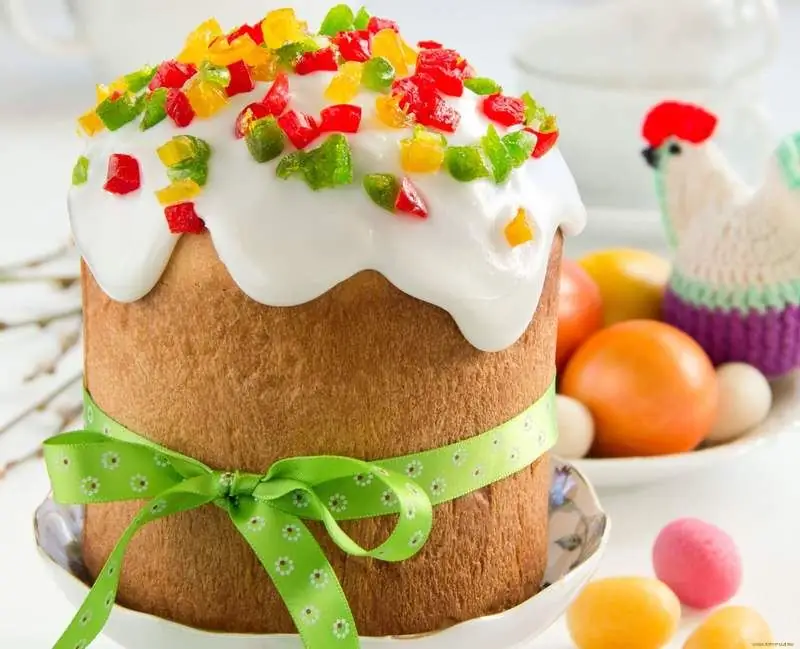
How to cook curd cake according to different recipes. Step-by-step instructions with photos and videos
